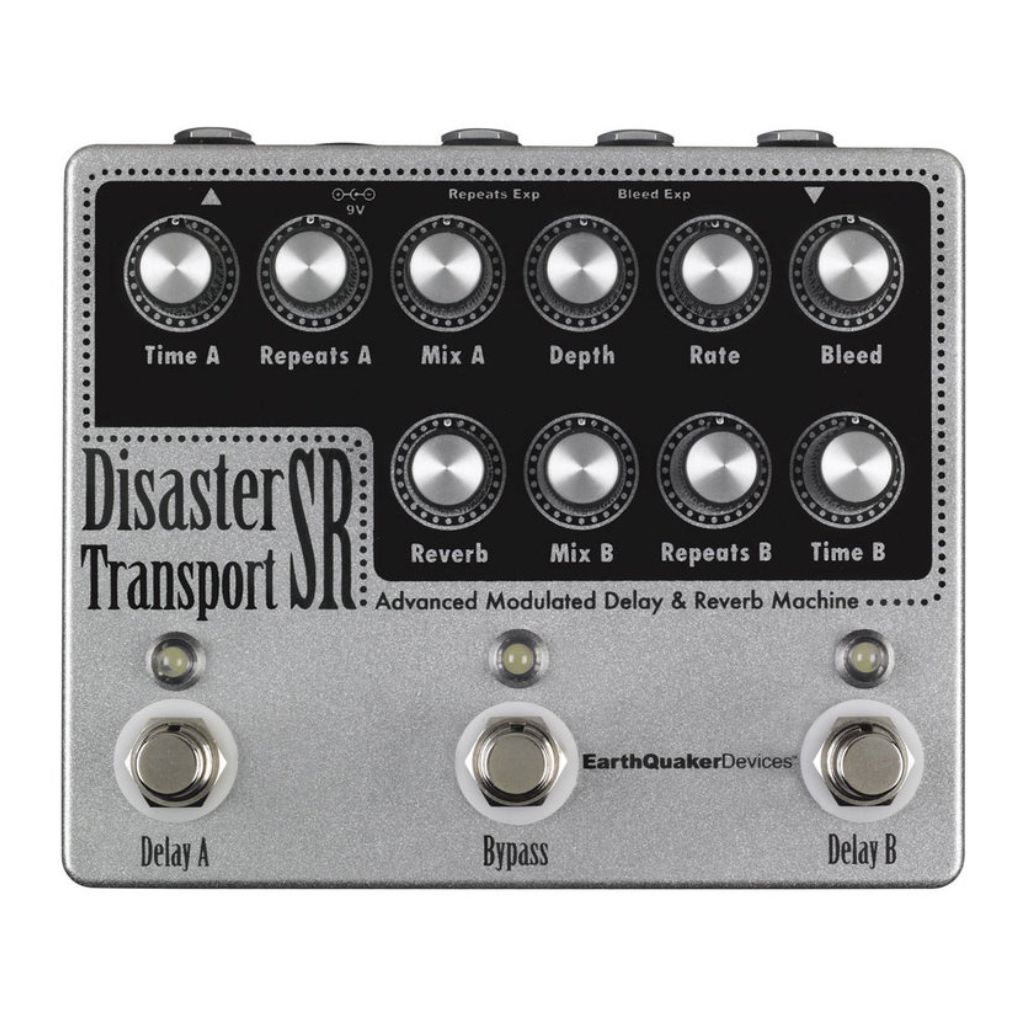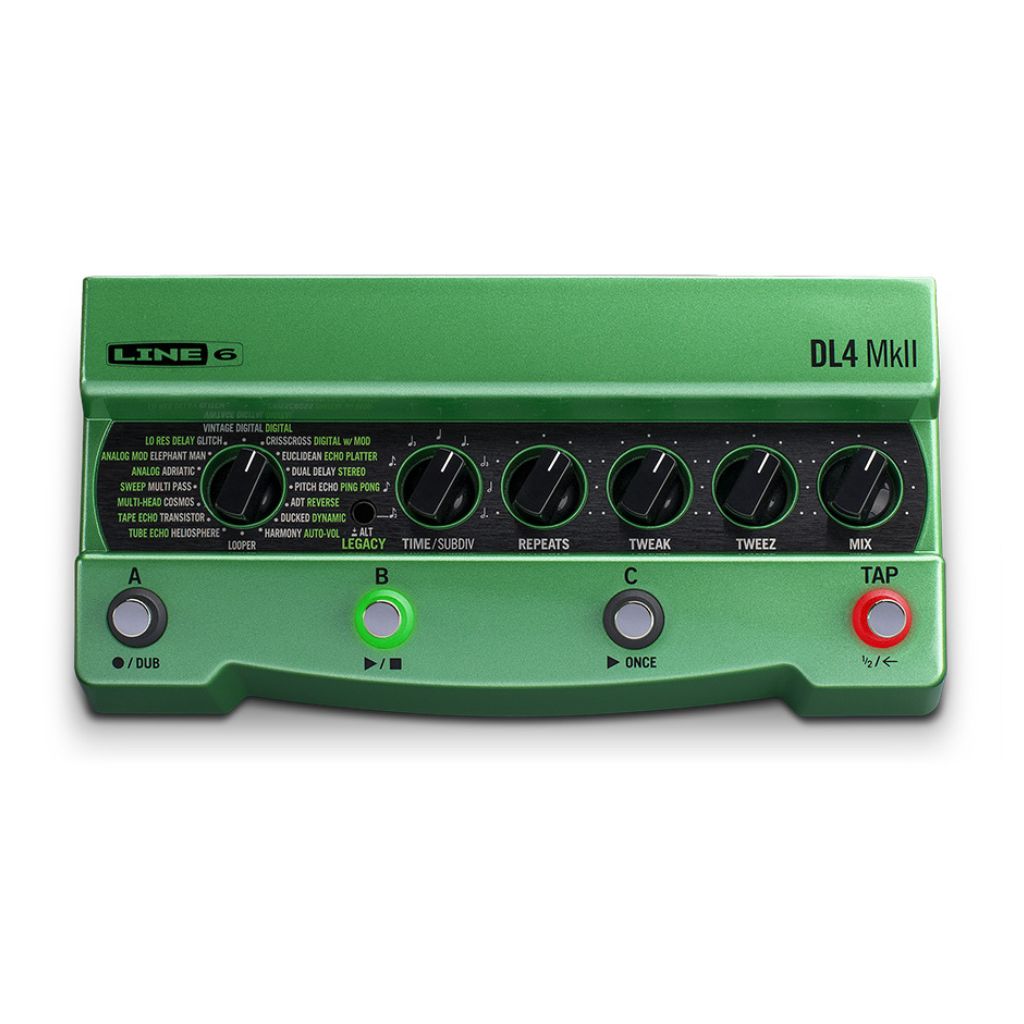The 10 best delay pedals to buy in 2023
Whether it’s your first delay or you’re already a seasoned collector, the sheer abundance of echo and delay effects on the market could make it hard to decide the right one for you. Let’s explore some of the best ones out there today.
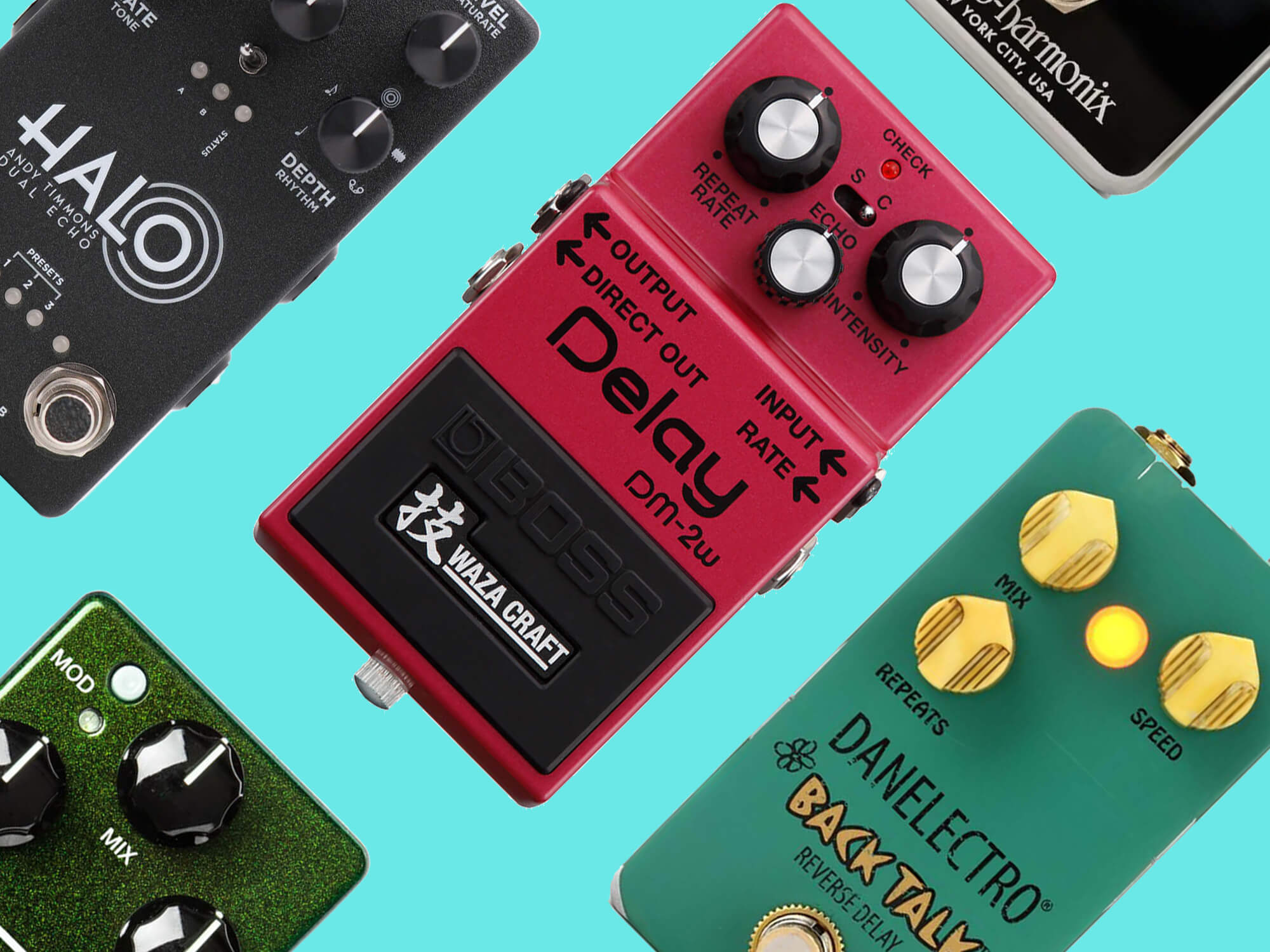
Featured in this article
The world of delay pedals is a wonderful thing, ranging from old-school vintage units to massively powerful ambient digital workstations – sometimes they can even be both at the same time. Let’s look at some of the best examples on the market right now.
What to look for in a delay pedal
Delay pedals, like overdrives and fuzzes, come in a variety of flavours. Most can be categorised as either analogue or digital, with some hybrids offering digital controls for analogue circuitry.
Generally speaking, analogue delays have shorter delay times and bring a more “characterful” tone to their repeats, while digital delays offer longer delay times and a more accurate reproduction of your sound.
A feature you’ll see often in the world of delay pedals is tap tempo, which lets you stomp on a footswitch to set your repeats at a particular tempo. While this can be useful for certain types of delay sounds – such as U2-style rhythmic pulses – other sounds, such as ambient washes, don’t really need it. With that in mind, it’s crucial to know what you plan to be using your delay for before dismissing a delay pedal for a lack of tap tempo.
The best delay pedals in 2023 at a glance:
- MXR Carbon Copy
- Boss RE-2 Space Echo
- Line 6 DL4 MkII
- Danelectro Back Talk
- Electro-Harmonix Nano Deluxe Memory Man
- Fender Hammertone Space Delay
- Boss DM-2W
- Strymon Volante
- Keeley HALO
- Meris LVX Modular Delay System
MXR Carbon Copy
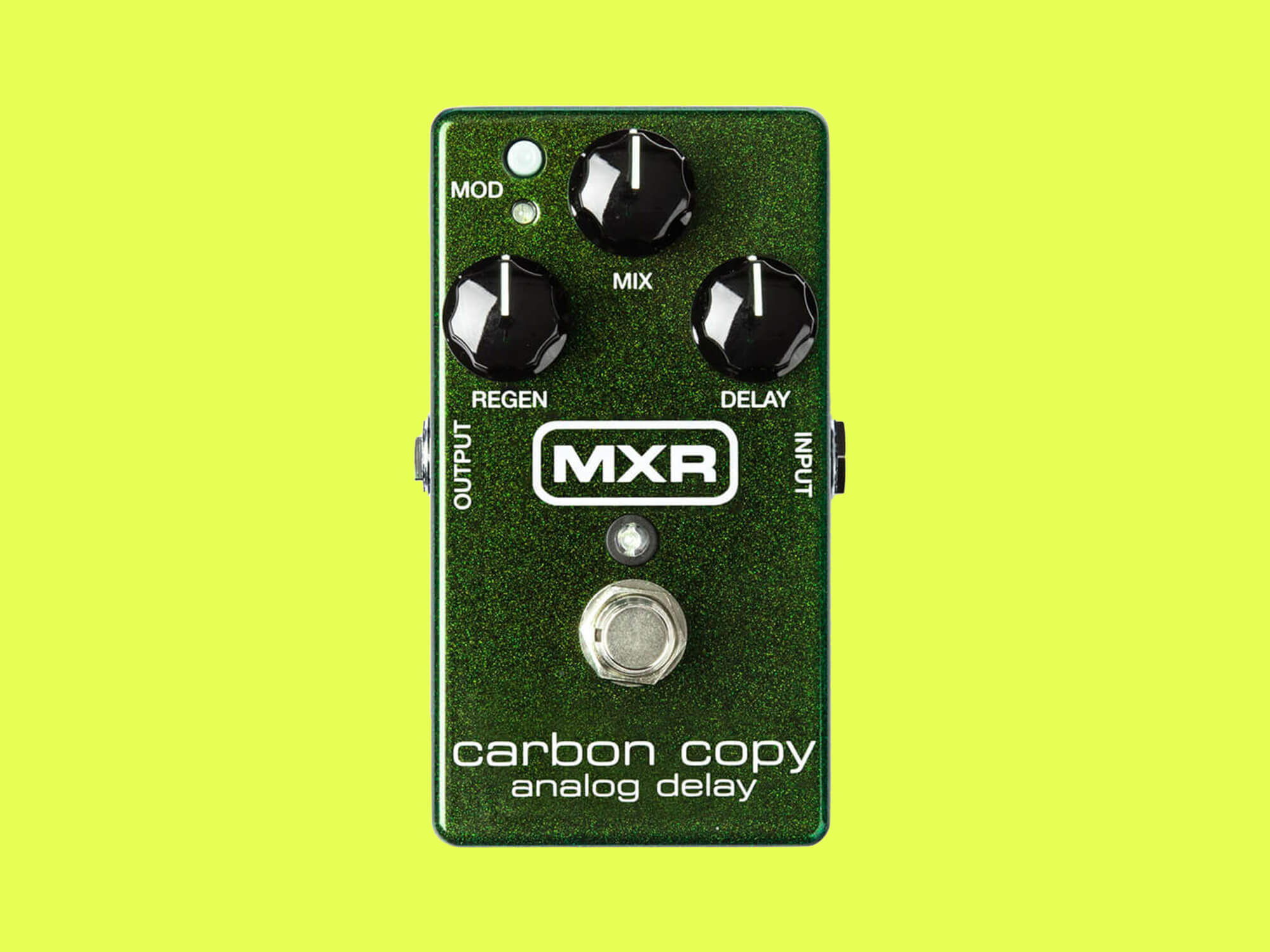
If you feel abject terror when you look upon a behemothic multi-footswitch delay pedal with a thousand onboard presets, full MIDI connectivity and knobs for wash, spin, rinse and dry, the simple-to-use MXR Carbon Copy could be for you.
There’s almost nothing to get between you and all the warm, lush analogue-delay sounds you want – just three knobs and a button to engage modulation. Despite the limited number of things to turn and press, the pedal isn’t limited in its variety of sounds, with up to 600ms delay time allowing for psychedelic swirls or funky slapback.
Grab today’s deals on the MXR Carbon Copy now
Boss RE-2 Space Echo
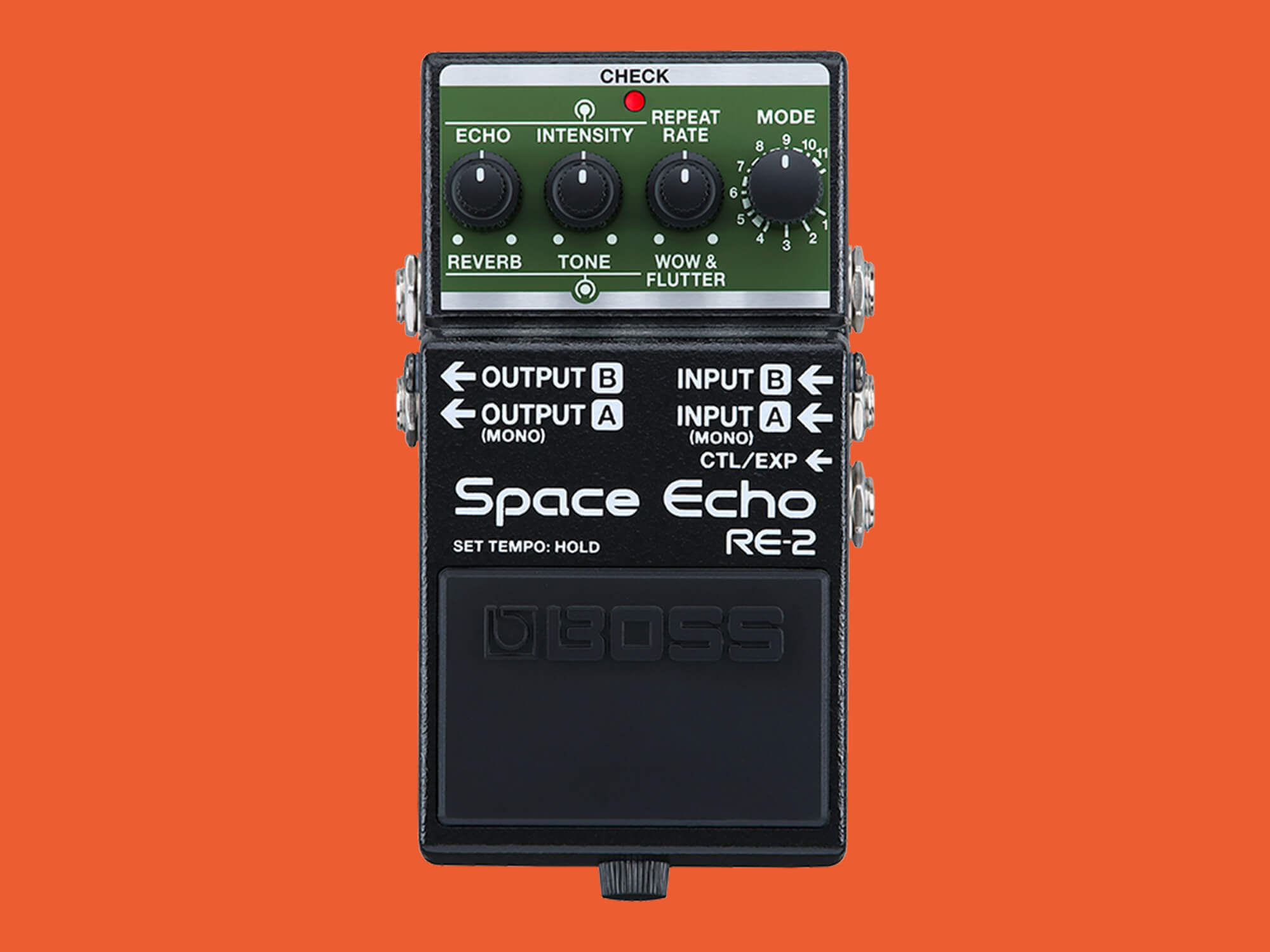
The original Roland Space Echo sounds excellent, of course, but do you really want to be lugging a delay unit around that’s bigger than your amp head? Boss’ latest Space Echo recreation is even smaller than its first, fitting it into the brand’s reliable and nigh-indestructible compact format.
There’s a full-on recreation of the orignal’s sounds and multi-head modes, as well as some new, previously-impossible delay tones. Thanks to the digital processing and full stereo operation, there’s a much longer delay time and an expanded selection of tape head modes..
It’s not just the size that makes it suitable for modern pedalboards, too: there’s on-board tap-tempo, as well as a control/expression pedal input to either set the tempo or introduce some time-warping effects if that’s your thing.
Grab today’s deals on the Boss RE-2 Space Echo now
Line 6 DL4 MkII
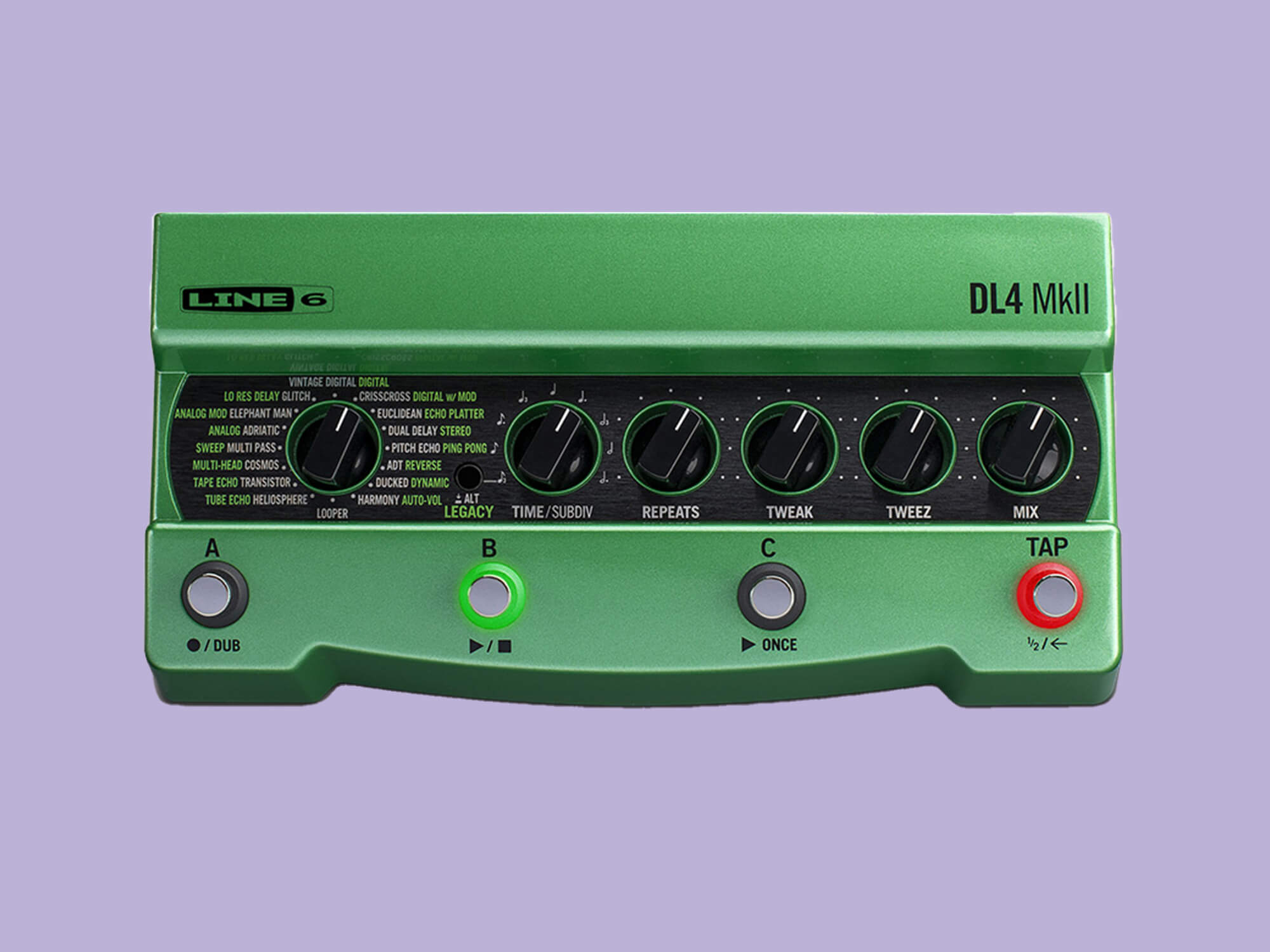
The original DL4 is a bona-fide classic. And, for the reissue, Line 6 realised that, as it’s recreated in full for MkII – alongside a slew of new delay modes. But all the things that made the original so damn unique remain, right down to the strikingly green and oddly-shaped enclosure, the looper, and even the digital artifacting of some of the stranger delay modes.
So the sounds are a mix of the tried-and-tested classics of the originals, and a bank of new effects, but the connectivity is where this pedal really shines. There’s an expression input, stereo ins and outs, full midi support with a through-output, a USB-C connect and, of course, a microphone input. In short: Line 6 has made the DL4 much, much easier to use in a modern setup, which is great news for anyone who liked the sounds of the first pedal – as they should!
Grab today’s deals on the Line 6 DL4 MkII now
Danelectro Back Talk
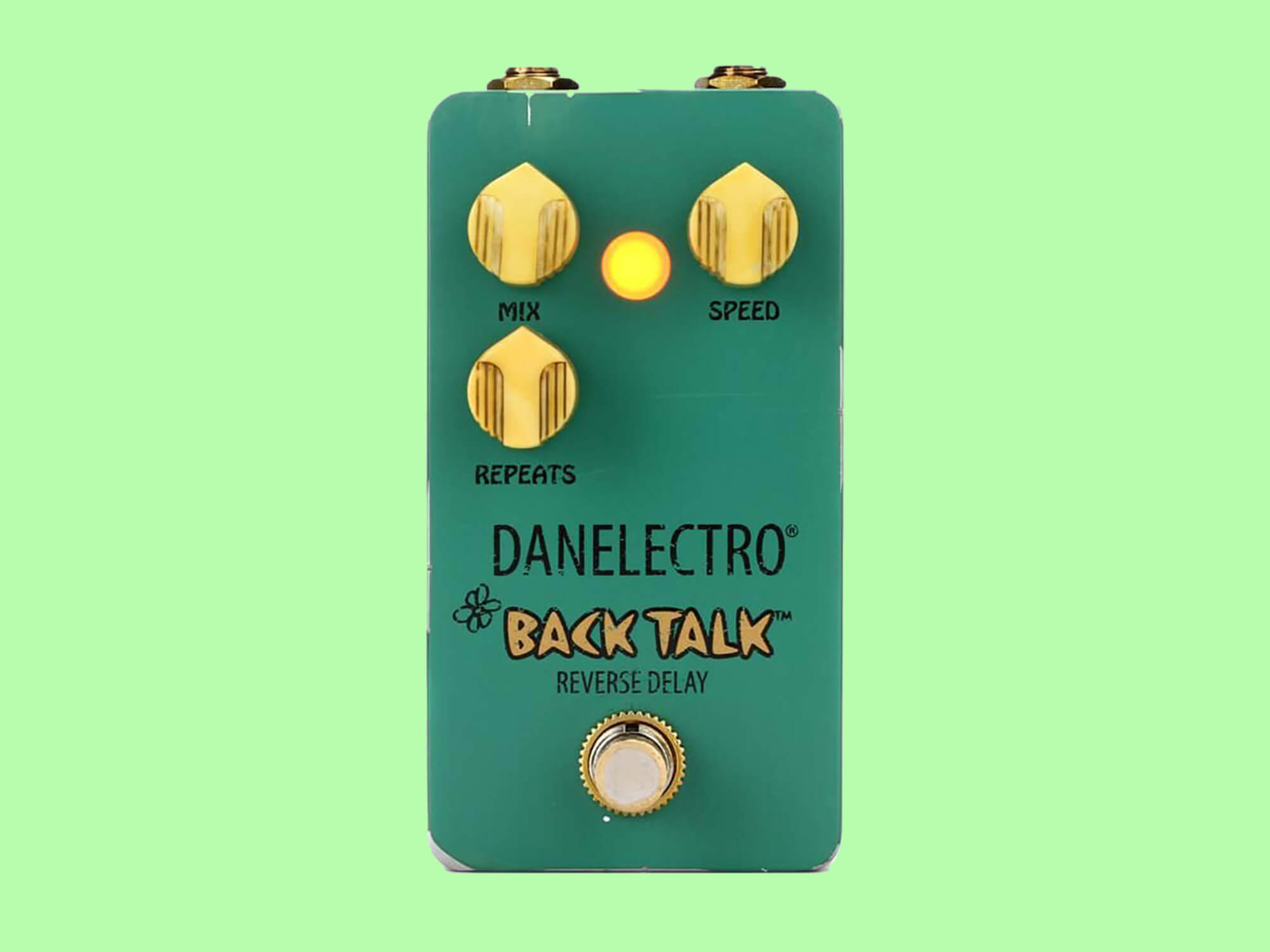
You might remember the original Danelectro Back Talk, however, yours mightn’t have survived the 20-odd years the pedal’s been around. The original was beloved for its sound – but somewhat bemoaned for its plastic enclosure and fragile audio jacks. Luckily, this reissue fixes that by offering the same swirling, psychedelic reverse delay of the original in a sturdy metal enclosure that’s far more pedalboard-friendly.
Controls are kept simple, with knobs for delay time, feedback and mix. The latter allows your reversed signal to sit subtly under your playing, or dominate it for a shoegaze-y wall of sound. Place before fuzz for maximum effect.
Grab today’s deals on the Danelectro Back Talk now
Electro-Harmonix Nano Deluxe Memory Man
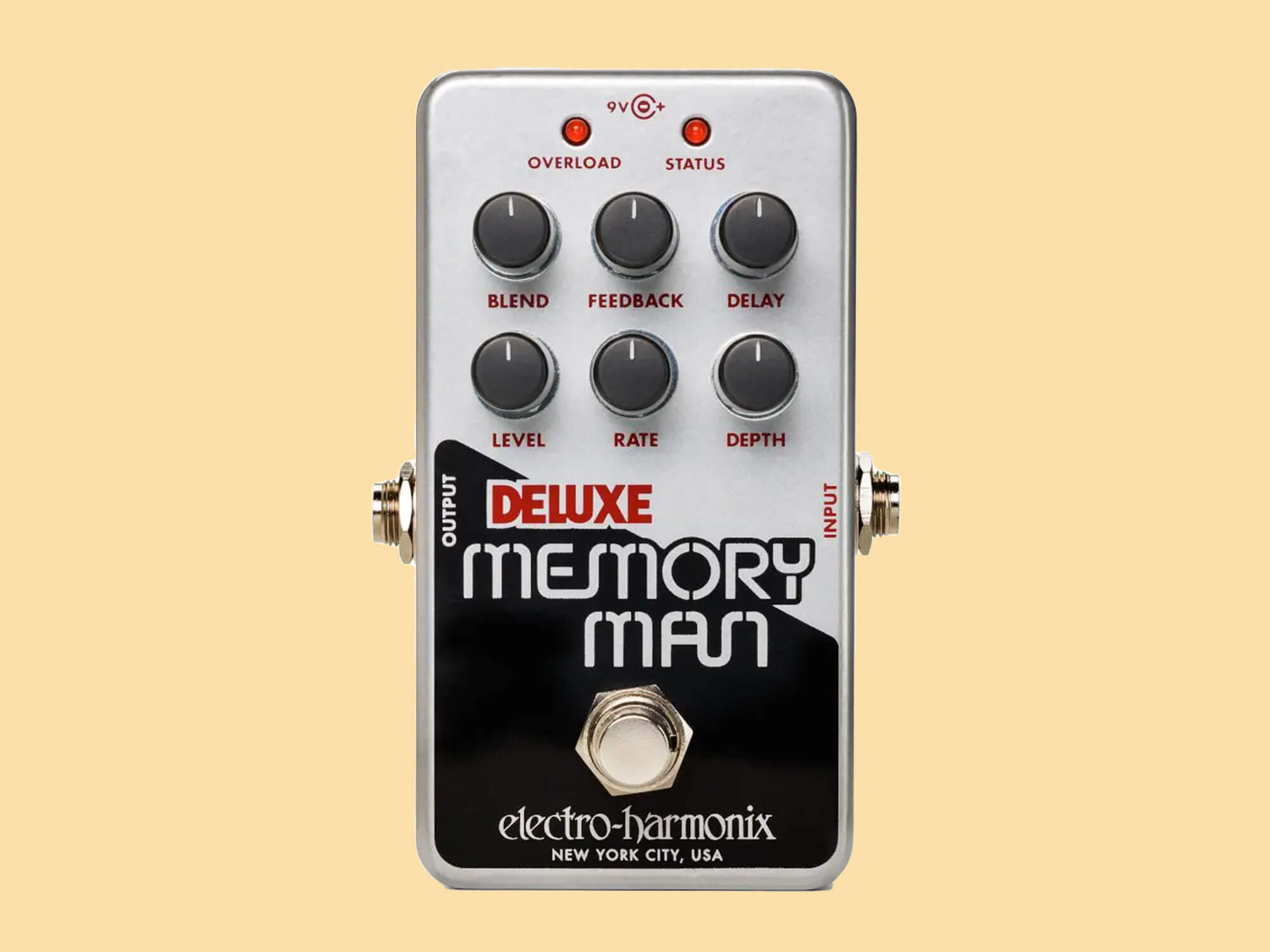
The original Deluxe Memory Man is one of the most sought-after analogue delay pedals of all time – one of the first bucket-brigade delays, and certainly one of the widest-used. A vintage unit could set you back at least several hundred of your chosen currency, but luckily Electro-Harmonix recently revived the pedal in this ultra-compact format, offering the same dark, characterful repeats as the original, as well as the same musical modulation options.
The completely analogue nature of the pedal means that repeats are far from pristine, and have a lot of top-end rolled off – which might not be ideal if you’re looking for that super-clean, digital delay sound. However, for a lot of guitarists, the way the repeats sink into the background thanks to their filtering makes the pedal all the more appealing.
Grab today’s deals on the Electro-Harmonix Nano Deluxe Memory Man now
Fender Hammertone Space Delay
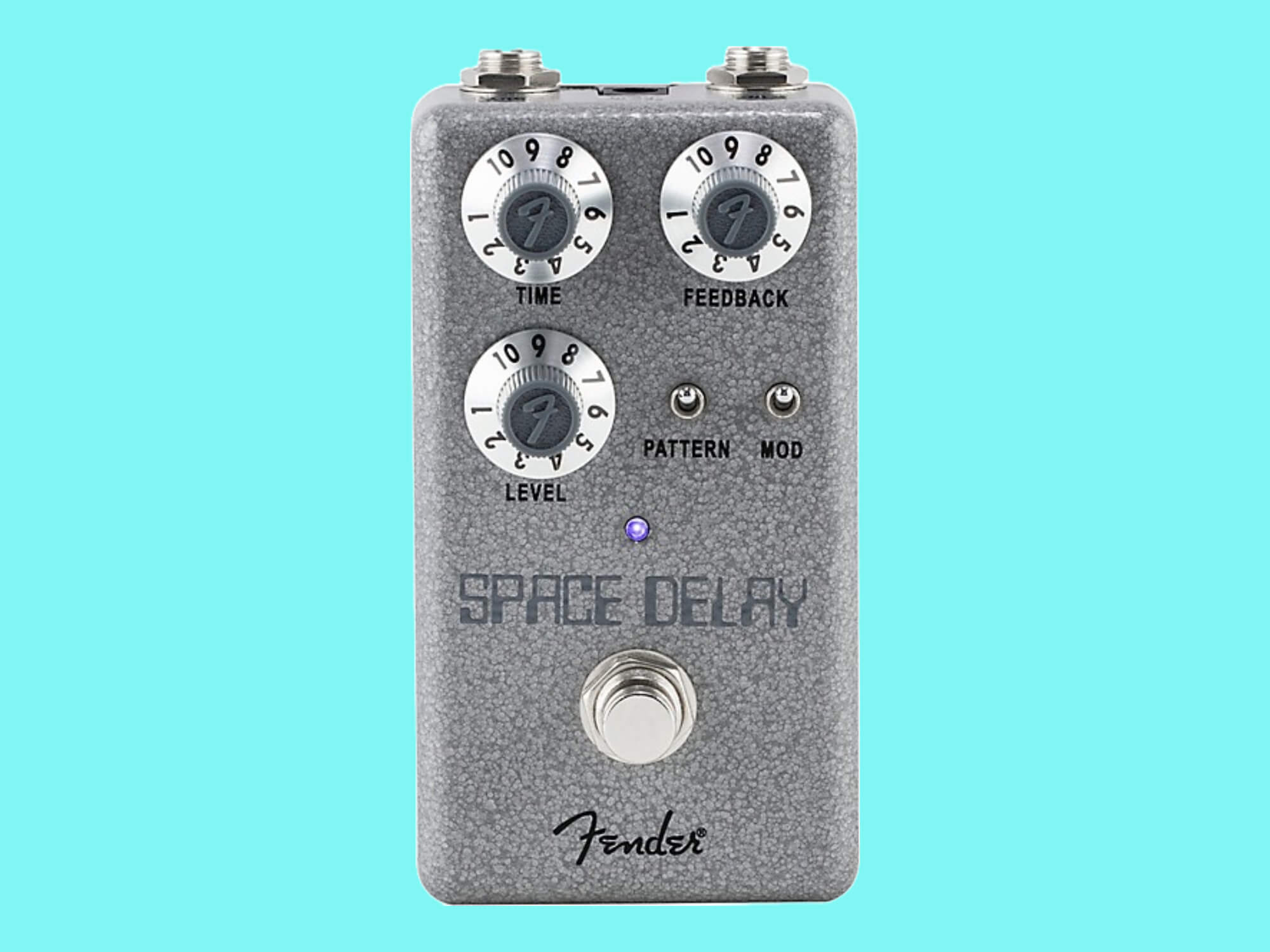
Looking for something in the vein of the Boss RE-2, but for a little less cash? Fender’s Hammertone Space Delay is your best bet. While it’s not as fully-featured as the RE-2 or the RE-202, it still does a good job offering some of the best things about Space-Echo-inspired pedals, such as some nice tape wobble on the repeats and some alternative multi-head patterns. If you crank the feedback knob you’ll get some nice self-oscillation in there too.
It’s a great entry point into the world of more complex delays, and learning how to play around multi-head and modulated repeats can really open up your sound.
Grab today’s deals on the Fender Hammertone Space Delay now
Boss DM-2W
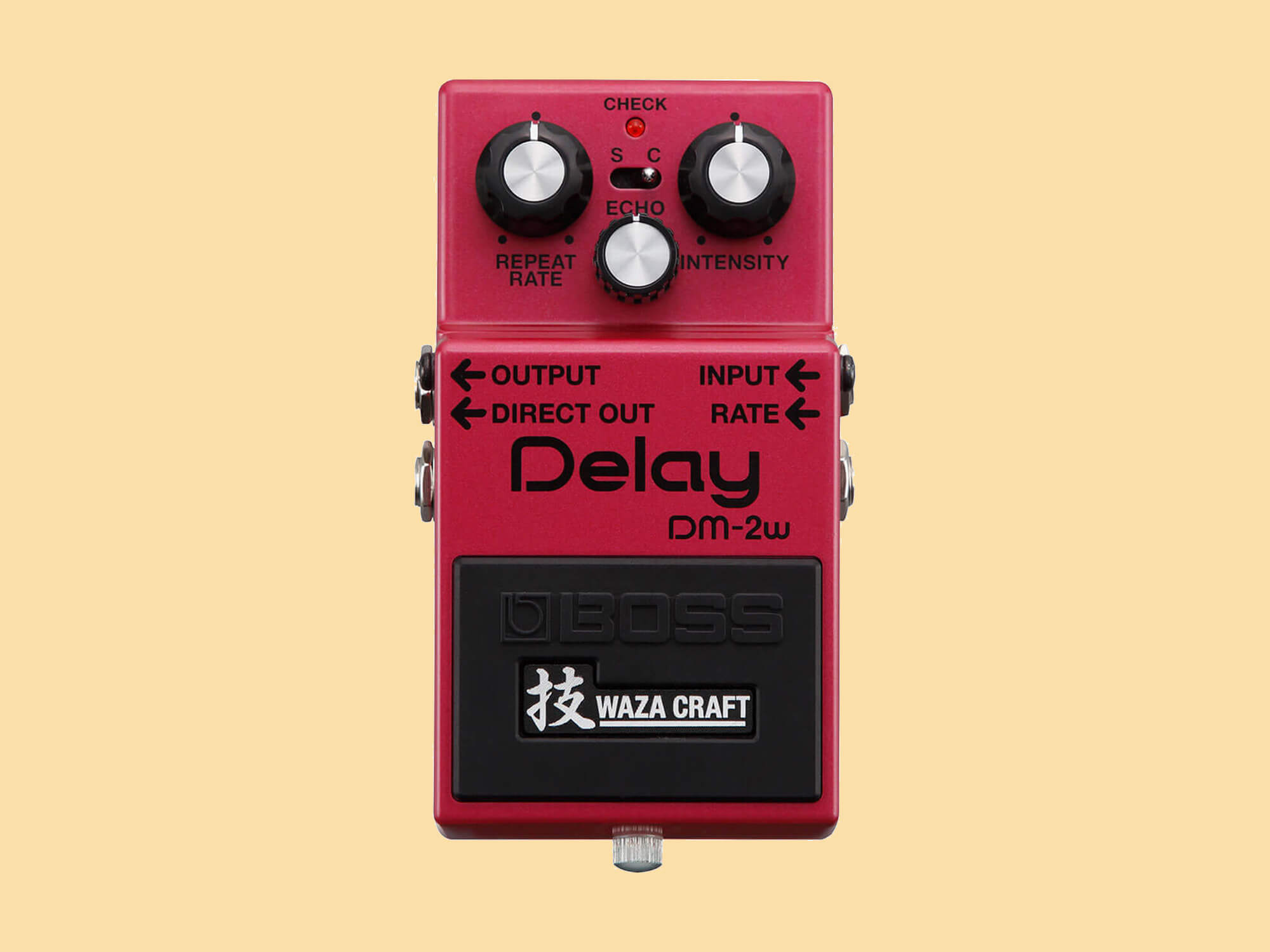
This compact red pedal was first introduced in 1981 – but was only around for three years. A fully analogue bucket-brigade delay, it was superseded by the digital DD-2 in 1984. In those three years, however, it built up enough of a cult following to warrant a Waza Craft reissue in 2015. Still fully analogue, this reissue adds a ‘custom mode’ switch to engage a brighter voicing and longer delay time.
But aside from that, the operation and sound are largely the same – three knobs allow for control over delay time, feedback and overall mix, with 300ms of delay time in standard mode and 800ms in the custom mode. Thanks to the analogue BBD chip the pedal is based around, the repeats retain that saturated, old-school sound that won’t clutter up your signal.
Grab today’s deals on the Boss DM-2W now
Strymon Volante
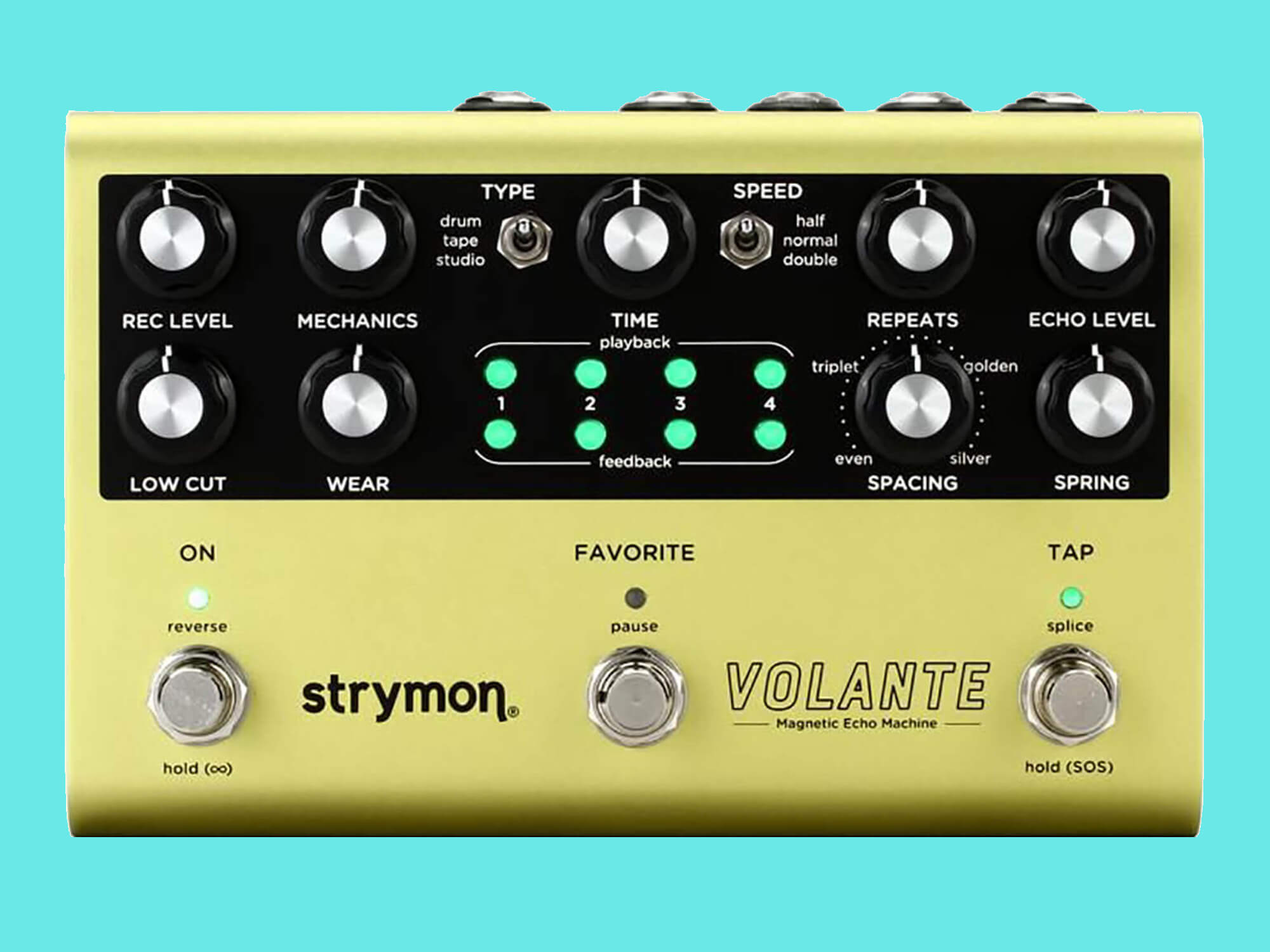
If you’ve fallen in love with the sound of any kind of tape delay, the Volante offers the best way to achieve and control that sound beyond dragging an actual studio reel-to-reel unit with you on tour. There’s also a drum-style echo, and four virtual-playback heads that can be activated/deactivated individually and set to full or half volume. Each can also be panned when using the unit in stereo.
Non-tape-simulating features include tap tempo, spring reverb and extensive MIDI support (as is custom when it comes to large Strymon delays and reverbs).
It’s impossible to sum up the features of the Volante in anything less than the full review, but given its price and complexity, you’re likely willing to do some extensive research before you drop nearly half a grand on a delay pedal.
Grab today’s deals on the Strymon Volante now
Keeley HALO
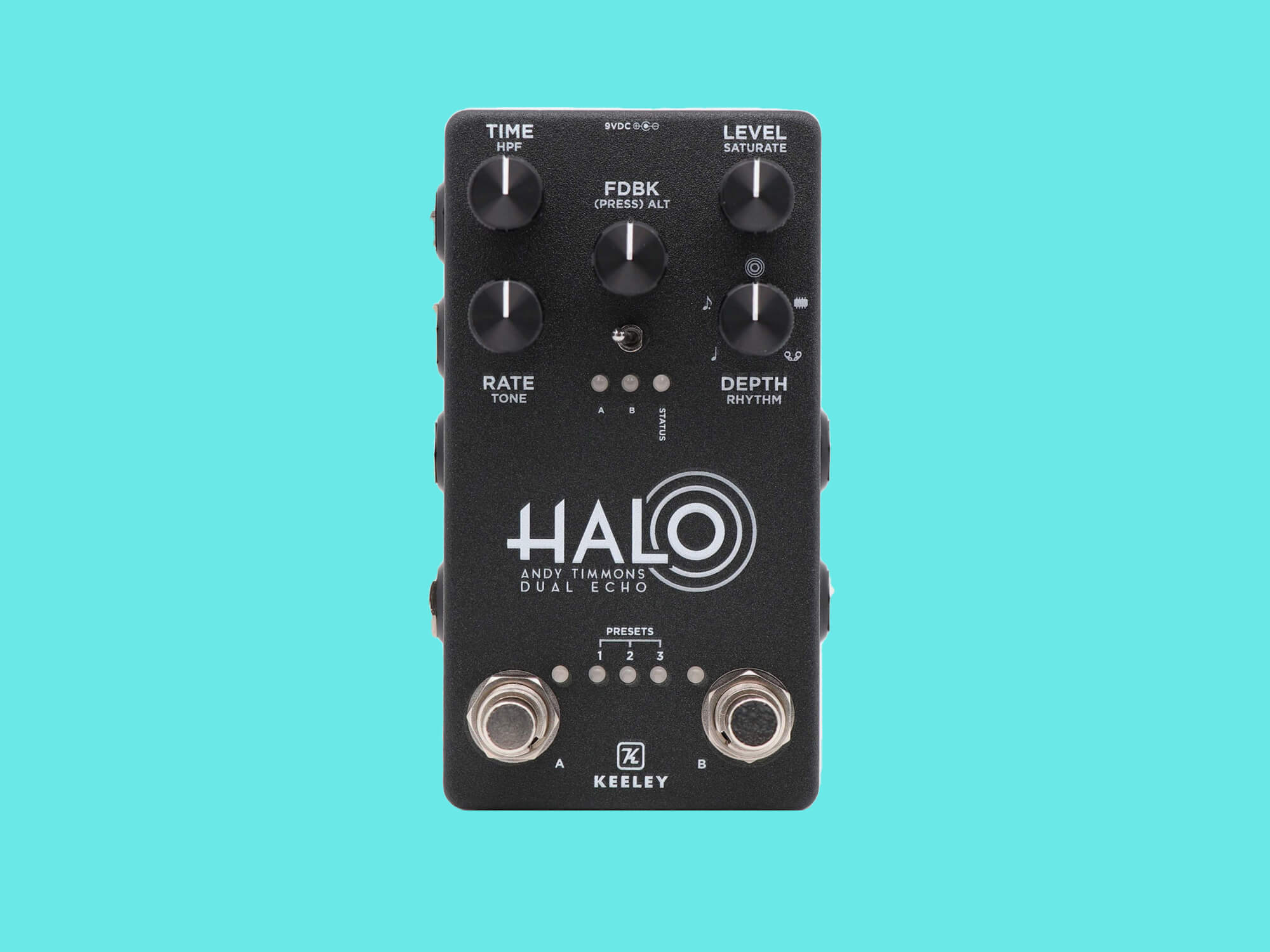
If you’ve ever heard Andy Timmons’ ‘halo’ delay sound, you’ll know its something special. And so when someone with as good as delay tone as Timmons teams up with effects wizard Robert Keeley to create a signature delay pedal, it’s pretty easy to recommend.
This dual delay can do everything from subtle stereo widening to all-consuming modulated ambience, with an impressive amount of customisability and connectivity for such a compact pedal
Two delay engines each provide 1500ms of delay time, a bunch of different repeat voices and modulation options, as well as a wide range of controls to filter and mix the repeats. Delay sounds can be saved as presets, and to get you started the eight factory settings do include the titular ‘halo’ mode off the bat. It might be overkill for a mono setup, but if you want a crash course as to the appeal of stereo delays, look no further!
Grab today’s deals on the Keeley HALO now
Meris LVX Modular Delay System

Speaking of overkill: at the start of this list we joked about the do-it-all, absurdly complex delay pedal. This is that pedal. The Meris LVX is a modular delay system, in that it lets you build a delay sound from discrete processing elements. If every other delay pedal has left you wanting, the LVX will let you dive down a rabbit hole filled with modulation, pitch shifting, ping-ponging and much, much more.
The digital signal chain has an ultra-hifi bitrate, and the sheer number of digital processing options is staggering. A lot of them are drawn from the rest of Meris’ pedal line, such as the Polymoon, but there are effects unique to the LVX too.
This is not a delay for those just getting their heads around the effect, that’s for sure – something definitely reflected by the pricetag – but there’s not really a more powerful delay unit out there, and if you need that much power, then you’re probably already sold.

